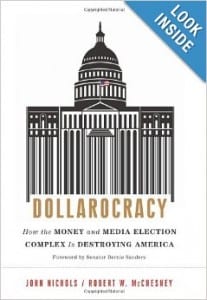Mexican tears—lágrimas y recuerdos—the heart of a great nation
El Día de Los Muertos
And Halloween
Quo Vadis?
By
Rodolfo F. Acuña
Mexicans, more than most races, seem preoccupied with death. Since colonial times Mexican laborers have continuously been uprooted, traveling thousands of miles from the interior of Mexico forging an El Camino Real to to mining camps and plantations in northern Mexico. They arrived in places like Zacatecas where they fanned out, forging spider web corridors in form of roads.
These workers felt vulnerable. They missed home, and most knew that they would never see their homes or families again.
La Canción Mixteca written in 1912 in Mexico City by José López Alavez, a Oaxacan composer, speaks to feelings of homesickness for Oaxaca. The song was later taken north to places such as Chicago where it became a favorite of Mexican migrants in the United States.
How far I am from the land where I was born!
And seeing myself so lonely and sad like a leaf in the wind,
I want to cry, I want to die from this feeling.
Oh Land of the Sun! I yearn to see you!
¡Qué lejos estoy del suelo donde he nacido!
y al verme tan solo y triste cual hoja al viento,
quisiera llorar, quisiera morir de sentimiento.
¡Oh Tierra del Sol! Suspiro por verte
y al verme tan solo y triste cual hoja al viento,
quisiera llorar, quisiera morir de sentimiento
In studying the history of Arizona miners I found it was common among these laborers to form mutualistas (Mutual Aid societies). Mineros wanted to care for their families in case they died before seeing the land of the sun. It was an insurance collective that would bury the member on a plot of land, and mark the grave with a cross.
Traveling around the Southwest today, you see crosses on the side of roads with flowers and photos of young children and adults who were killed by a motorist. Often their families don’t have the funds to bury them. The practice of building makeshift altars is also spreading to urban spaces where it is being adopted by other ethnic and racial groups.
I often think of death not because I believe in an afterlife but because I want to remember and to be remembered much like I remember my parents and my grandparents. My own personal belief about death is expressed in George Carlin’s routine on death. Carlin says when you are dead, you are dead, you are not departed, you are not resting, you are dead. http://www.youtube.com/watch?v=3PiZSFIVFiU. There is no heaven, there is no hell, you have not lost your love ones, and they are dead.
As a kid these religious days meant that we got a religious holiday. At least for me, the days had very little meaning. Halloween fell on the 31st of October, a day that we went trick or treating, accumulating mounds of candy that surely contributed to our tooth decays and diabetes.
Every year Halloween seems to have less and less meaning for most Americans; its only function is to feed their superstitions and multiply candy and costume sales.
On this day, death is portrayed by witches, black cats, and omens, with young and old alike going to haunted houses. Americans enjoy being scared. It epitomizes a fear of death – a sort of Friday the 13th. http://www.halloweenhistory.org/ http://www.livescience.com/40596-history-of-halloween.html
The closest thing to a Mexican version of Halloween is the horror story about El Cucuy that is told children to keep them in line. It is the Mexican version of the boogeyman that is in search of victims. Significantly, the Cucuy is a Spanish invention, originating in Portugal and Galicia and transported to the Americas.
El Día de los Muertos is more profound. In places like Los Angeles, San Antonio and Chicago, it is a day of remembrance. As the Mexican population increases, it is spreading and infiltrating the popular culture. Unlike Halloween, it has little to do with “me.”
During El Día de los Muertos we design altars and adorn them with pictures of loved ones, their favorite foods, and other items. Their favorite music is played.
The Day resembles Sunday at a cemetery where entire Mexican families show up and visit their dead, clean the gravestones of their parents and loved ones, and visit them. They may be dead but they are remembered.
I don’t want to go into a historical narrative about El Día de los Muertos, only that it is millenniums old. With Mexicans, it is rooted in their indigenous past, and it was later appropriated by Spanish Catholicism.
The celebration goes beyond trick or treating, scaring the hell out of someone or the cruel incidents of killing a black cat. As Carlin said, when you are dead, you are dead.
Today I write books and articles because I want to be remembered. I don’t want to die without leaving my footprints, giving testimony to my existence and reminding people that I was here.
As I have stated, I am not religious but that does not mean that I do not remember. When I went to Nogales, I visited my maternal grandparents’ grave. I was overcome by nostalgia. I remembered getting shoved out of the first grade in public school and being put into a mentally retarded class.
My parents pulled me out of public school and sent me to live with my grandparents who would walk me to a Catholic School three miles from the house. My mother was legally blind and sick – but I could not understand why I was sent away from home through no fault of my own – I felt that I was bad because I could not speak English.
Touring the various altars I will remember colleagues such as Roberto Sifuentes, Shirlene Soto, and Lorenzo Flores as well as students such as Teri Orozco, Martin Cano and Mario Muñiz who are alive because we remember them. http://www.youtube.com/watch?v=jCQnUuq-TEE http://en.wikipedia.org/wiki/Day_of_the_Dead
Will El Día de los Muertos become another Halloween or another Cinco de Mayo where people celebrate it without really remembering? The American capitalist culture is rapidly coopting lo mexicano. Will it suffer the fate of the Cinco de Mayo that has become one big happy hour with local strip joints selling Cinco de Mayo margaritas?
El Día los Muertos belongs to us and our memories, let’s see how long it takes for it to be franchised by Disney.
Professor Rodolfo Acuña is a longtime defender of Mexican and Chicano culture.
For those who have an extra $5 a month for scholarship, the For Chicana/o Studies Foundation was started with money awarded to Rudy Acuña as a result of his successful lawsuit against the University of California at Santa Barbara. The Foundation has given over $60,000 to plaintiffs filing discrimination suits against other universities. However, in the last half dozen years it has shifted its focus, and it has awarded 7-10 scholarships for $750 per award on an annual basis to Chicana/o and Latina/o students at California State University-Northridge (CSUN). The For Chicana/o Studies Foundation is a 501(c) (3) Foundation and all donations are deductible. Although many of its board members are associated with Chicana/o Studies, it is not part of the department. All monies generated go to fund these scholarships.
We know that times are hard. Lump sum donations can be sent to For Chicana Chicano Studies Foundation, 11222 Canby Ave., Northridge, Ca. 91326 or through PayPal below. You can reach us at forchs@earthlink.net. Click on to http://forchicanachicanostudies.wikispaces.com/ and make a donation. You may also elect to send $5.00, $10.00 or $25.00 monthly. For your convenience and privacy you may donate via PayPal. The important thing is not the donation, but your continued involvement.





